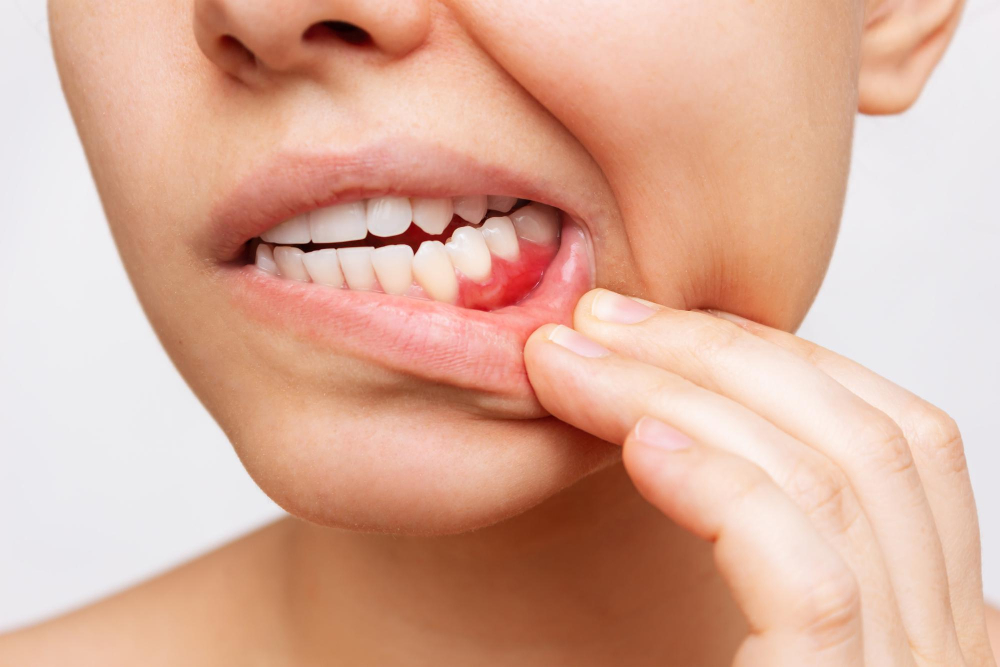

Receding gums is one of the most common dental health problems. Gums are a pink tissue that covers the neck of the teeth, protects the root and extends to the jaw. The recession in this tissue causes the tooth and tooth roots to appear. This opening causes bacterial accumulation to be facilitated and bacteria to form in the cavities.
Receding gums is a slow process. For this reason, most people may not notice or ignore this gum disease. Early recognition of the condition is very effective for preventing receding gums. Treatment at the onset of the disorder can be quite successful. It is a risky process that can lead to serious damage to the tissues and bones surrounding the tooth and tooth loss in the later stages. For this reason, any doubt should be taken into consideration and the dentist should be visited as soon as possible.
Gum recession is a risk to oral health. This is a condition that affects the teeth and gums together. However, there is no single cause of this ailment. There are many cases of receding gums.
Bacterial gingivitis and gum disease adversely affect both the gum tissue and the bone that holds the teeth. It is also a disease in which tooth sensitivity is very high.
Genetic factors are highly effective on gum disease. People with a genetic predisposition can have these diseases, even if they take care of their dental care.
Although gingival recession can be encountered at any age, it is remarkably high in people aged 60 and over.
Deep cleaning the teeth does not mean brushing them hard and fast. Brushing the teeth hard and incorrectly creates a wearing effect on the gums. This causes damage to the enamel that protects the tooth, causing gum recession.
Inadequate dental care negatively affects oral hygiene and oral health. One of the most obvious consequences of this situation is that the plaques between the teeth become tartar. Tartars have a very hard structure and can only be removed with professional care by your dentist. If the tartar is not cleaned, it can cause recession in the gums.
Smoking is also a factor that accelerates the formation of plaque.
The disease may also develop due to hormonal reasons. Adolescence, pregnancy and menopause are risky periods for gum diseases.
Grinding or clenching your teeth puts excessive pressure on the teeth. As a result of this pressure, recession may occur in the gums.
If the teeth are crooked, the pressure on the gums and bone during biting is much more than normal. If this situation continues for a long time, recession may occur in the gums.
Recession in the gums causes a noticeable tooth sensitivity in the teeth, but there are also different symptoms. Some of the symptoms of gum recession are as follows,
Plaques cause tooth decay. At the same time, the spaces formed due to these plaques increase. When it comes to the last stage of treatment, it can lead to tooth loss. Tooth sensitivity and bad odor in the mouth are other negative conditions. Gum recession also creates aesthetically disturbing results. Teeth affected by extraction appear larger than healthy teeth.
Treatment can be carried out in two different ways, depending on the condition of the case. In mild gum recession, plaque and tartar formed on the teeth and root surfaces that come out as a result of discomfort are carefully cleaned. Then the surface of this cleaned area is leveled. This step is necessary to prevent bacteria from adhering to the surface. Depending on the progression of the disease, antibiotics may be prescribed after treatment.
As the gum recession progresses, the recession gaps become very deep. The deep cleaning process, which gives very successful results in mild cases, may not be enough to clean these gaps. Recession in the gums can also lead to bone loss depending on the severity. Therefore, gum recession surgery is recommended for advanced cases.
Open Flap Surgery: Bacteria accumulate in the spaces formed due to gingival recession. Open flap surgery aims to remove these bacteria and then firmly fix the gum on the cleaned area.
Guided Tissue Regeneration: If the gum recession is severe enough to cause destruction on the bone, the directed tissue regeneration method is preferred to regenerate the bone and tissue. Basically, this treatment is similar to the method of reducing the depth of the opening. The regenerative material applied after bacterial cleaning is the point that differentiates the process. The application ends with the gingival tissue firmly fixed to the tooth or tooth root.
Gum Graft: The most commonly preferred tissue graft is the connective tissue graft. The tissue taken from the roof of your mouth or another healthy area is sutured to the gingival tissue and the exposed tooth root is protected.
Oral care is important to prevent gum recession. Regular brushing of teeth and visits to the dentist at least twice a year are the most important conditions for maintaining dental health. In addition to these, brushing the teeth with the right methods without pressure with a soft-bristled toothbrush, not smoking and having a healthy diet will reduce the risk. In addition, observing the condition of the teeth and gums at regular intervals will be useful in terms of noticing the changes that occur at the initial stage.